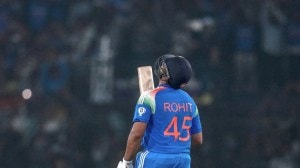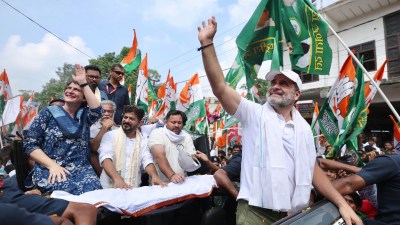Stay updated with the latest - Click here to follow us on Instagram
Warts,Wrinkles and All
Britain's largest outdoor swimming pool in New Brighton was a holiday destination for workers and their families in the Eighties.
British photographer Martin Parr on capturing people at their vulnerable worst
Britain’s largest outdoor swimming pool in New Brighton was a holiday destination for workers and their families in the Eighties. A swim and some grub would make for a good day out and some cheery photographs. But when the British photographer Martin Parr took pictures there,he caught the litter floating in the water,babies bawling while their tired mothers rested,the hungry gathering at the hotdog counter,and armies of people who had come for a bit of tan. Parrs photobook Last Resort (1986) courted much controversy,the British were not too happy being exposed in vivid colour,warts,wrinkles and all. But if you want to know about a country and its people,you have to visit their beaches. People are almost naked,relaxed. As a photographer,Im looking for that moment of vulnerability. I think its what makes a good photograph, says Parr,57,sitting at the Photoink Gallery at Jhandewalan before the beginning of an exhibition of some of his works from Last Resort,British Food and Martin Parr in India 1984-2009.
Parr was just 14 when he wanted to be a photographer and four years later he enrolled at the Manchester Polytechnic to study photography. Back then,not many became photographers. But today,anybody can be a photographer. With camera phones,people are constantly clicking and if one in a hundred can do it with some seriousness and compose a shot,you might find a good photographer, says Parr. He began taking photographs in black and white and embraced colour only in the mid 1980s. Serious photography was always in black and white,snapshots were in colour, says Parr,who began taking pictures in daylight with the flash on,creating an overtly bright and colourful effect. The result is a shiny,dramatic and yet naked image of people at their vulnerable worst.
His Indian photographs are unlike the usual fare: these are not pictures of the Ganga in Varanasi,no sadhus with ash-marked foreheads,no women in mustard fields. I travelled to India for the first time in 1984,out of curiosity. I reached Delhi in April,it was too hot,so I went to Darjeeling, says Parr,who took photographs of the Tea Planters Club,the Gymkhana Club and St Pauls School in Darjeeling. I have always had a case of Raj nostalgia. In some ways,Darjeeling was more British than Britain was and there was an Indian quirkiness within that very British environment, says Parr,whose irreverent,funny photographs capture the unique laundry drying method at the boys school,Crime and Detection section at the library at the Tea Planters Club and the warmth of Glenarys tea room. On his later visits,Parr went to the beaches of Goa ,Mumbai and Chennai,taking photographs of a different kind of marine life.
Parr is currently busy with sourcing material for the third volume of The Photobook: A History,a selection from over 1,000 photobooks from the 19th century to the present day. I began collecting photobooks over 30 years ago. I was struck by how there are no history books on photography, says Parr. The other project that will keep him busy is the Brighton Photo Biennale that Parr is curating in October. It is slated to be the biggest photo exhibition in the world, he says.
The exhibition is on till March 27 at Photoink. Parr will give a talk at 6 pm on February 22. Contact: 28755940







